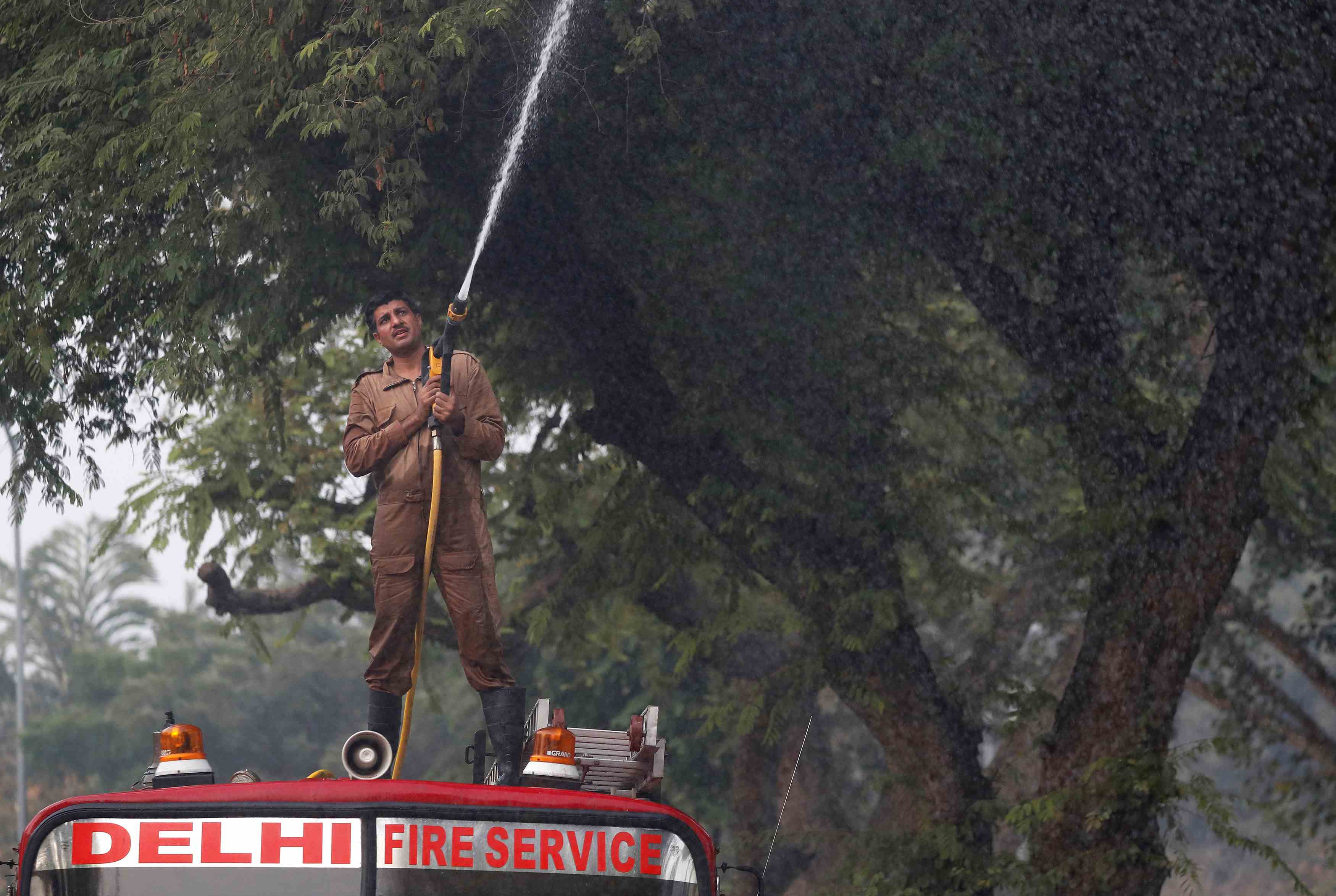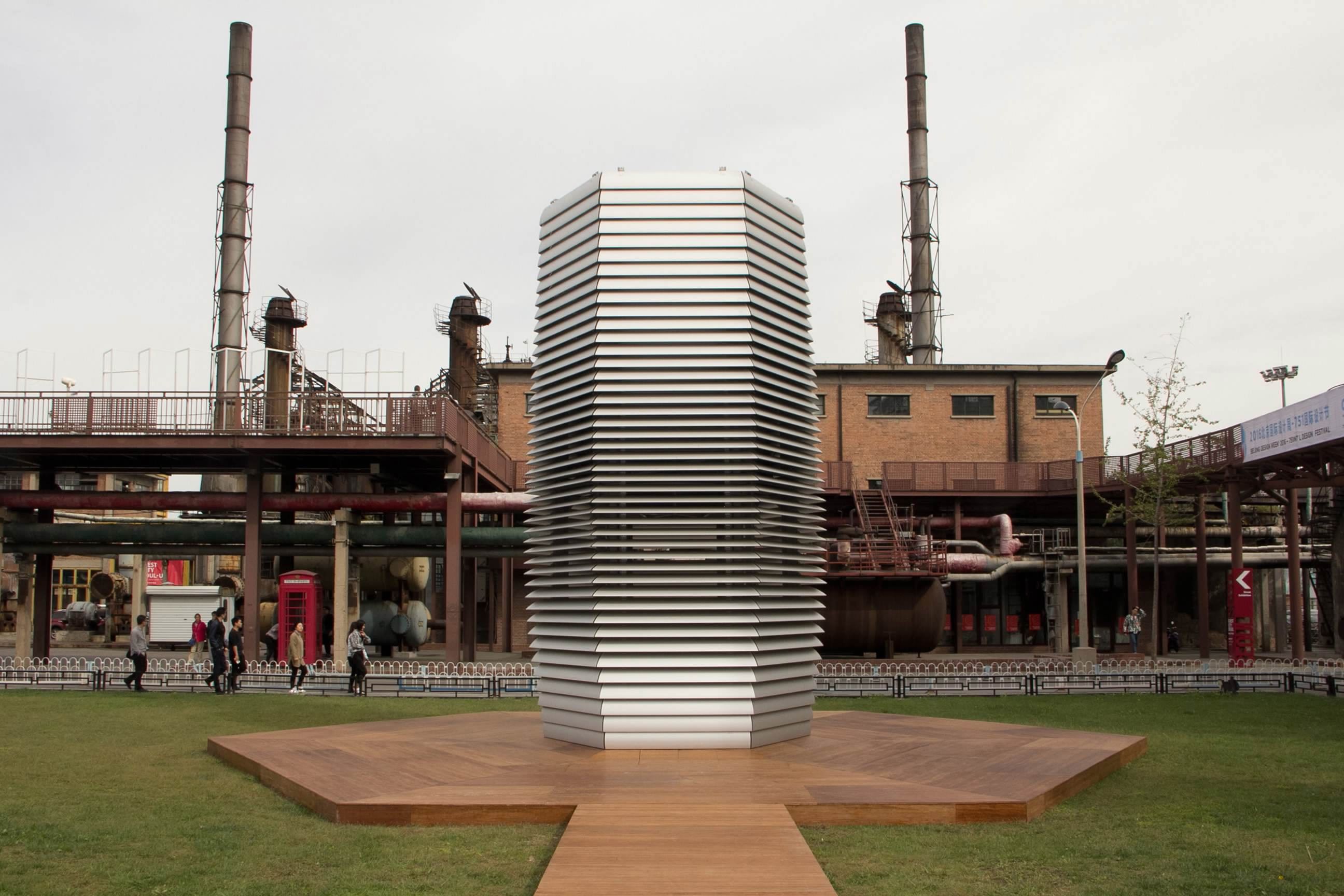
Tech & Sci
16:52, 15-Nov-2017
When smog gets thick, cities plan big
Alok Gupta

From Mexico to New Delhi, cities are planning extreme measures to curb choking air pollution. New Delhi on Monday embarked on a plan to deploy helicopters to spray water to dissipate smog.
A thick blanket of smog forced the government to close schools in Delhi and nearby areas.
Smog halts helicopter plan to curb smog
On Friday, Pawan Hans, a national helicopter service, offered to sprinkle water as a method of controlling the smog, due to rising level of particulate matter (PM) 2.5 and 10 in the air. The air quality index (AQI) in the capital city recorded PM 2.5 level crossing 700 micrograms on Tuesday morning, last week.
PM 2.5 are tiny particles that enter the bloodstream and lungs causing lethal diseases. At present, the PM levels are nearly seven times higher than the safe limit of 51 to 100. Average PM 2.5 levels in the capital and adjoining areas are hovering at 400 to 450 micrograms.
Excited with the plan to spray water from a helicopter to dissipate the thick blanket of smog, Delhi’s Environment Minister Imran Hussain convened a meeting with Pawan Hans officials along with representatives from the Civil Aviation Ministry on Monday.

A firefighter sprays water onto trees to fight the air pollution in Delhi on Nov. 14. /REUTERS/Cathal McNaughton
A firefighter sprays water onto trees to fight the air pollution in Delhi on Nov. 14. /REUTERS/Cathal McNaughton
The plan was nearly finalized, but helicopter operators realized that smog had lowered the visibility to the extent that they could not lift off.
After the meeting, the managing director of Pawan Hans told the Indian Express, “Right now, with the prevailing smog, it is not possible for the helicopters to carry out operations.”
“We have communicated the same to the Delhi government. There was a meeting regarding this on Monday,” he added.
Mexico planned to install giant fans
Just like New Delhi, Mexico also had an ambitious plan to check the rising air pollution.
Mexico City had proposed to establish a network of 100 giant fans that would suck polluted air engulfing the city, and throw it out of the city. In 1992, the city mayors also intended to drill holes in the mountains surrounding the city to vent out the polluted air.
Mexico City had approved a pilot project to test the feasibility of the concept. A sum of 100 million US dollars was also approved for the project. The city planners had envisioned to switch on 25-feet-high fans, only when the pollution was heavy. Each fan would require an uninhabited area of nearly 1,000 square yards.
The concept was based on heating the air by installing gas burners around the cluster of fans. These heaters would heat the ground air making it lighter, and fans would suck the heated air and throwing it back to the sky. The plan was termed ‘foolish’ by the Mexican environmentalists and later shelved.

Buildings are shrouded in smog in Mexico City, capital of Mexico on May 3, 2016. /Xinhua/Alejandro Ayala
Buildings are shrouded in smog in Mexico City, capital of Mexico on May 3, 2016. /Xinhua/Alejandro Ayala
France tags the cars
Almost all the countries have tried to control vehicular movements to regulate emissions on severely smoggy days. Delhi restricted the number of cars last year by implementing 'odd-even' car policy.
Similarly, the French government banned cars on severe smoggy days. From January this year, France introduced and made compulsory to display a “clean sticker” called Crit'Air that certifies age and fuel emissions from the vehicles. The stickers have been introduced in six colors that will help police identify heavily polluting vehicles.
The Crit’Air 1 stickers represent electric, and hydrogen-powered vehicles while dark grey colored Crit’Air 6 are polluting diesel fuel-run cars.
France will ban plying of severely polluting vehicles in Paris, Lyon, Grenoble, and Lille, and the stickers will help law implementing agencies to identify polluting automobiles. However, the implementation of the scheme is witnessing a challenge, as very few motorists have put the stickers on their vehicles, the Guardian reported.
China’s smog sucker
China, a country notorious for air pollution, is witnessing a hi-tech solution.

A Smog Free Tower pumping out clean air at a park in Beijing. /Derrick Wang Photo
A Smog Free Tower pumping out clean air at a park in Beijing. /Derrick Wang Photo
Dutch artist and innovator Daan Roosegaarde and his team of designers and engineers as a part of Smog Free Project have installed a giant 25-feet-high smog sucking tower in Beijing.
The idea came to Roosegaarde during a trip to smoggy Beijing.
After the installation of the project, there were doubts whether the tower is helping to curb smog. Studio Roosegaarde, in an email to CGTN, claimed that the smog-free tower is working efficiently. The spokesperson maintained that a recent study by Professor Bert Blocken, the Eindhoven University of Technology in the Netherlands claims that the tower is removing large fractions of particulate matter from the air in its immediate surroundings.
Both the technology and the Smog Free Tower itself have been successfully evaluated with both field measurements and numerical simulations with Computational Fluid Dynamics, the spokesperson added.
“The results confirm that the tower captures and removes up to 70 percent of the ingested PM10 and up to 50 percent of the ingested PM2.5. For a tower in an open field in calm weather, this provides PM10 reductions up to 45 percent and PM2.5 reductions up to 25 percent in a circle with a diameter of more than 20 m around the tower,” the study claimed.

SITEMAP
Copyright © 2018 CGTN. Beijing ICP prepared NO.16065310-3
Copyright © 2018 CGTN. Beijing ICP prepared NO.16065310-3